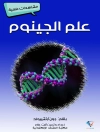Advanced Genetic Analysis brings a state-of-the-art, exciting new approach to genetic analysis. Focusing on the underlying principles of modern genetic analysis, this book provides the 'how’ and 'why’ of the essential analytical tools needed. The author’s vibrant, accessible style provides an easy guide to difficult genetic concepts, from mutation and gene function to gene mapping and chromosome segregation. Throughout, a balanced range of model organisms and timely examples are used to illustrate the theoretical basics.
* Basic principles – Focuses students attention on the 'how’ and 'why’ of the essential analytical tools.
* Vibrant, accessible style provides an easy guide through difficult genetic concepts and techniques.
* Text boxes highlight key questions and timely examples.
* Boxes of key information in each chapter, chapter summaries and extensive references – prompt the student to synthesise and reinforce the chapter material.
* Special reference section addressing a range of model organisms to help provide a particularly relevant context for students’ research interests.
Spis treści
Preface.
Introduction.
1. Mutation:.
Types Of Mutations.
Dominance And Recessivity.
The Genetic Utility Of Dominant And Recessive Mutants.
Summary.
Gallery Of Model Organisms.
2. Mutant Hunts:.
Why Look For New Mutants?.
Mutagenesis And Mutational Mechanisms.
What Phenotype Should You Screen (Or Select) For?.
Actually Getting Started.
Summary.
3. The Complementation Test:.
The Essence Of The Complementation Test.
Rules For Uing The Complementation Test.
How Might The Complementation Test Lie To You?.
Second-Site Non-Complementation (SSNC) (Non-Allelic
Non-Complementation).
An Extension Of Second-Site Non-Complementation: Dominant
Enhancers.
Summary.
4. Suppression:.
A Basic Definition Of Genetic Suppression.
Intragenic Suppression (Pseudo-Reversion).
Extragenic Suppression.
Transcriptional Suppression.
Translational Suppression.
Suppression By Post-Translational Modification.
Extragenic Suppression As A Result Of Protein-Protein
Interaction.
Suppression Without Physical Interaction.
Suppression Of Dominant Mutations.
Designing Your Own Screen For Suppressor Mutations.
Summary And A Warning.
5. Determining When And Where Genes Function:.
Epistasis: Ordering Gene Function In Pathways.
Mosaic Analysis: Where Does A Given Gene Act.
Summary.
6. Genetic Fine-Structure Analysis:.
Intragenic Mapping (Then).
Intragenic Mapping (Now).
Intragenic Complementation Meets Intragenic Recombination: The
Basis Of Fine-Structure Analysis.
An Example Of Fine-Structure Analysis For A Eukaryotic Gene
Encoding A Multifunctional Protein.
Fine-Structure Analysis Of Genes With Complex Regulatory
Elements In Eukaryotes.
Pairing-Dependent Intragenic Complementation.
Summary.
7. Meiotic Recombination:.
An Introduction To Meiosis.
Crossingover And Chiasmata: Recombination Involves The Physical
Interchange Of Genetic Material And Ensures Homolog Separation.
The Classical Analysis Of Recombination.
Measuring The Frequency Of Recombination.
The Mechanism Of Recombination.
Summary.
8. Meiotic Chromosome Segregation:.
Types And Consequences Of Failed Segregation.
The Origin Of Spontaneous Non-Disjunction.
The Centromere.
Segregational Mechanisms.
Summary.
Epilogue.
References.
Partial author index.
Subject index.
O autorze
R. Scott Hawley is a Senior Scientist at the Stowers
Institute of Medical Research. Before joining the Stowers Institute
in 2001, he was a Professor of Genetics at the University of
California at Davis for 10 years. An accomplished textbook author,
he has also published over 50 papers and articles in scientific
journals. He has also served on the Board of Directors of the
Genetics Society of America and is currently on the Editorial Board
of Genetics.
Michelle Walker is an Intellectual Property Specialist
for Galileo Laboratories in Santa Clara, California. She earned an
MS in Genetics from the University of California at Davis, has
written several scientific articles, served as an Editor for the
entomological journal Sociobiology, and spent numerous hours
volunteering her time in the field of bioethics and as a scientific
mentor for inner-city children.












